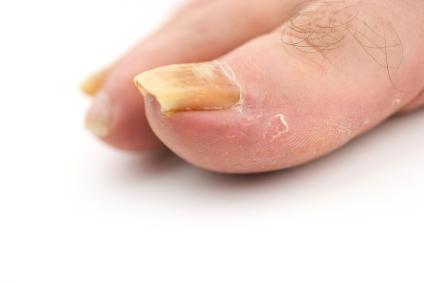Thick Toenails: Causes, Symptoms, and Risk Factors
Thick toenails, medically known as onychomycosis or tinea unguium, can be a bothersome and sometimes painful condition. While they may not always be a cause for concern, understanding the underlying causes, recognizing the symptoms, and knowing the risk factors is essential for proper care and prevention. In this comprehensive guide, we will delve into the world of thick toenails, exploring what causes them, how to identify the symptoms and the factors that increase the risk of developing this condition.

What Are Thick Toenails?
Thick toenails, as the name suggests, refer to toenails that have become abnormally thick or hard. This condition can affect one or more toenails and may occur for various reasons. Thick toenails are often a result of an underlying issue, and they can be more than just a cosmetic concern.
Why Are Thick Toenails a Concern?
While thick toenails may not always cause discomfort, they can lead to several concerns:
Pain and Discomfort:
Thick toenails can press against the inside of your shoes, leading to pain and discomfort, especially when walking or wearing tight-fitting footwear.
Difficulty Trimming Nails:
Thick toenails can be challenging to trim properly, increasing the risk of ingrown toenails or injury during nail care.
Risk of Infection:
Thick toenails are often associated with fungal infections. Fungal nail infections can be stubborn to treat and may lead to further complications if left untreated.
Causes of Thick Toenails
Thick toenails can have various underlying causes. Understanding these causes is crucial for effective management and prevention. Let’s explore some of the primary reasons for thickened toenails:
Fungal Infections: A Common Culprit
Fungal infections, particularly onychomycosis, are a leading cause of thick toenails. Fungi can invade the nail bed and cause the nail to thicken, become discolored, and crumble.
Injury or Trauma: Understanding the Impact
Injuries or trauma to the toenail, such as dropping a heavy object on it or stubbing it against a hard surface, can damage the nail matrix. This damage can result in thickened toenails.
Age-Related Changes: What to Expect
As we age, our nails, including toenails, tend to grow more slowly and may become thicker. Age-related changes can also lead to nail deformities.
Underlying Medical Conditions: When to Worry
Certain medical conditions, such as psoriasis, diabetes, and circulation problems, can contribute to thick toenails. Managing the underlying condition is essential for addressing this issue.
Poor Foot Hygiene: Prevention Matters
Neglecting proper foot hygiene can create an environment where fungal infections thrive. Regular cleaning and drying of the feet can prevent thick toenails caused by fungal growth.
Recognizing the Symptoms
Distinguishing between thick toenails and normal nails is crucial for timely intervention. Here are some symptoms to look out for:
Thick Toenails vs. Normal Nails: Spotting the Difference
Thick toenails are noticeably thicker and harder than normal nails. They may also appear yellowed or discolored.
Symptoms of Fungal Infections: What to Look For
If a fungal infection is causing your thick toenails, you may notice additional symptoms:
Brittleness: Infected nails can become brittle and crumble easily.
Change in Color: The nail may become yellow, brown, or have white spots.
Odor: Fungal infections can cause a foul odor.
Separation: The nail may separate from the nail bed.
Pain and Discomfort: A Sign of Trouble
If you experience pain, discomfort, or difficulty walking due to thick toenails, it’s essential to seek medical attention promptly.
FAQs About Thick Toenails
Q: What causes thick toenails?
A: Thick toenails can be caused by various factors, including fungal infections, trauma, genetics, or underlying health conditions.
Q: Are fungal infections a common cause of thick toenails?
A: Yes, fungal infections, especially onychomycosis, are a common cause of thickened toenails. They can result in changes in nail texture and color.
Q: Can trauma or injury lead to thick toenails?
A: Yes, repeated trauma or injury to the toenails, such as from tight shoes or physical activities, can cause toenails to thicken over time.
Q: Is it possible to prevent thick toenails?
A: While you can’t always prevent the thickening of toenails, you can minimize the risk by maintaining good foot hygiene, wearing proper-fitting shoes, and avoiding injury.
Q: What are the symptoms of toenail fungal infections?
A: Symptoms may include thickening, discoloration, brittleness, and separation of the toenail from the nail bed. Fungal infections can also cause pain or discomfort.
Q: Can I treat thick toenails at home?
A: Mild cases of thick toenails can be managed at home with proper nail care, but it’s essential to consult a healthcare professional for an accurate diagnosis and treatment plan.
Q: Are there any over-the-counter treatments for thick toenails?
A: Yes, there are over-the-counter antifungal nail treatments available. However, their effectiveness can vary, and consulting a healthcare provider is advisable for persistent cases.
Q: When should I see a podiatrist or dermatologist for thick toenails?
A: If you experience pain, discomfort, or signs of infection, or if home treatments aren’t working, it’s advisable to consult a podiatrist or dermatologist.
Q: Can thick toenails be a sign of an underlying health condition?
A: Yes, in some cases, thickened toenails can be associated with underlying health conditions like diabetes or circulatory problems. Consult a healthcare provider for evaluation.
Q: Is it possible to have thick toenails removed or treated professionally?
A: Yes, healthcare professionals can provide treatments such as nail thinning, prescription medications, or, in severe cases, surgical removal to address thick toenails.
Conclusion
Thick toenails can be a bothersome condition, but with proper care and attention, you can maintain healthy feet and minimize the risk of this issue. Regularly inspect your toenails, practice good foot hygiene, wear appropriate footwear, and seek professional help when needed.
Remember that this article provides general information, and individual cases may vary. It’s always best to consult with a healthcare professional for a personalized diagnosis and treatment plan tailored to your specific needs. Prioritizing your foot health can contribute to your overall well-being and comfort.




